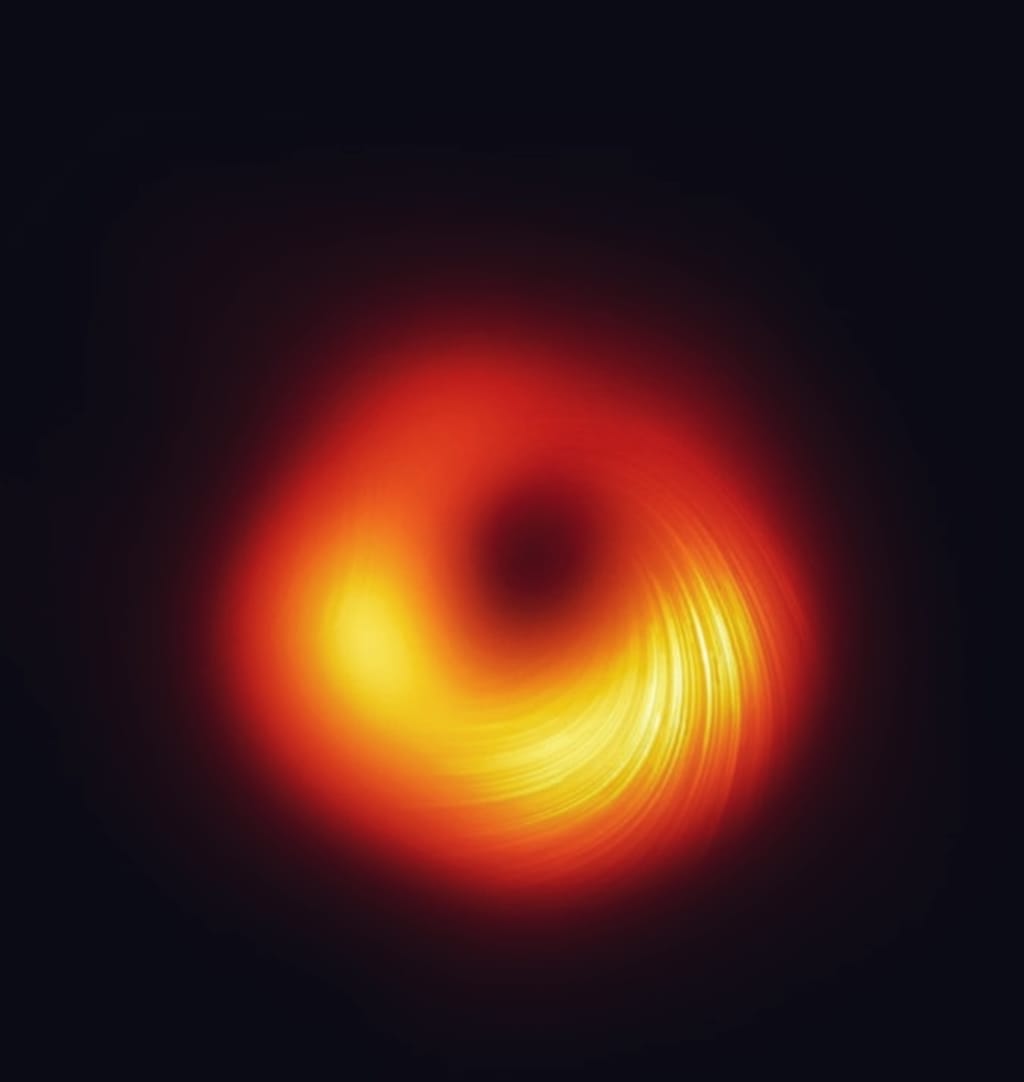Sagittarius A* and Formation of black holes
Sagittarius A* Supermassive black hole

Sagittarius A* is a supermassive black hole located at the center of the Milky Way galaxy. It is estimated to have a mass of about 4 million times that of the Sun and is one of the most extensively studied objects in the universe. In this article, we will explore the characteristics and significance of Sagittarius A*.
Discovery and observation:
Sagittarius A* was first detected in the early 1970s by astronomers studying radio emissions from the center of the Milky Way. Since then, it has been observed using various telescopes and instruments, including radio, infrared, and X-ray telescopes.
One of the most remarkable observations of Sagittarius A* was made using the Event Horizon Telescope (EHT) in 2019. The EHT is a network of telescopes around the world that work together to create a virtual telescope with the power to capture images of the black hole's event horizon, the boundary beyond which nothing can escape the black hole's gravitational pull. The resulting image provided the first direct evidence of the existence of a black hole and confirmed many predictions of Einstein's theory of general relativity.
Characteristics:
Sagittarius A* is located approximately 26,000 light-years from Earth in the direction of the constellation Sagittarius. It has a mass of about 4 million times that of the Sun and a diameter of about 44 million kilometers. It is surrounded by a cluster of stars that orbit around it at high speeds, indicating the presence of a massive object at the center.
One of the most intriguing characteristics of Sagittarius A* is its quiescent state, meaning it is not currently actively feeding on matter. This is in contrast to other supermassive black holes that are actively accreting matter and emitting intense radiation. The reason for Sagittarius A*'s quiescence is still not fully understood, but it may be due to the lack of nearby matter or a strong magnetic field that prevents matter from falling into the black hole.
Significance:
Studying Sagittarius A* provides valuable insights into the behavior of black holes and their impact on the surrounding environment. It also helps scientists understand the evolution of galaxies, as supermassive black holes are believed to play a crucial role in the formation and growth of galaxies.
In addition, the study of Sagittarius A* has important implications for the search for life beyond our solar system. The radiation emitted by the black hole can provide clues about the habitability of planets in the vicinity and the conditions necessary for life to exist.
Conclusion:
Sagittarius A* is an enigmatic object that continues to captivate the imagination of astronomers and the general public alike. Its study has provided invaluable insights into the behavior of black holes and their role in the evolution of galaxies. As technology continues to improve, it is likely that we will learn even more about this fascinating object and the mysteries it holds.
foformation of black holes :
Black holes are one of the most mysterious and fascinating objects in the universe. They are areas in space where gravity is so strong that nothing, not even light, can escape. But how do these cosmic behemoths form?
The formation of black holes is intimately linked to the end stages of massive stars. When a star runs out of fuel, the inward pull of gravity becomes dominant, causing the star to collapse inward. This process releases a huge amount of energy in the form of light and heat, which we see as a supernova explosion.
The fate of the collapsing core of the star depends on its mass. If the mass of the core is less than about 1.4 times that of the Sun, it will become a white dwarf - a dense, Earth-sized object made mostly of carbon and oxygen. But if the mass is greater than 3 times that of the Sun, it will continue to collapse to form a black hole.
In between these two limits, something strange happens. As the core collapses, its density and temperature increase rapidly. At some point, the protons and electrons in the core merge to form neutrons, a process known as neutronization. This releases a burst of neutrinos - ghostly particles that hardly interact with matter - which carry away some of the energy of the collapse. This causes the core to bounce back, producing a shock wave that blows away the outer layers of the star.
The remaining core, now about the size of a city, is still collapsing under the force of gravity. If its mass is greater than about 3 times that of the Sun, the core will continue to collapse until it becomes a black hole. The boundary between a collapsing core that will become a neutron star and one that will become a black hole is known as the Tolman-Oppenheimer-Volkoff (TOV) limit.
The exact process by which a collapsing core forms a black hole is not yet fully understood. One possibility is that the core collapses to a point of infinite density, known as a singularity, surrounded by a region of space from which nothing can escape - the event horizon. Another possibility is that the core forms a dense object known as a neutron star, which subsequently collapses further to form a black hole.
Regardless of the exact details, the formation of black holes is a spectacular cosmic event that marks the end of a star's life. These mysterious objects continue to captivate astronomers and physicists alike, as we strive to unravel the secrets of the universe's most extreme phenomena.






Comments
There are no comments for this story
Be the first to respond and start the conversation.